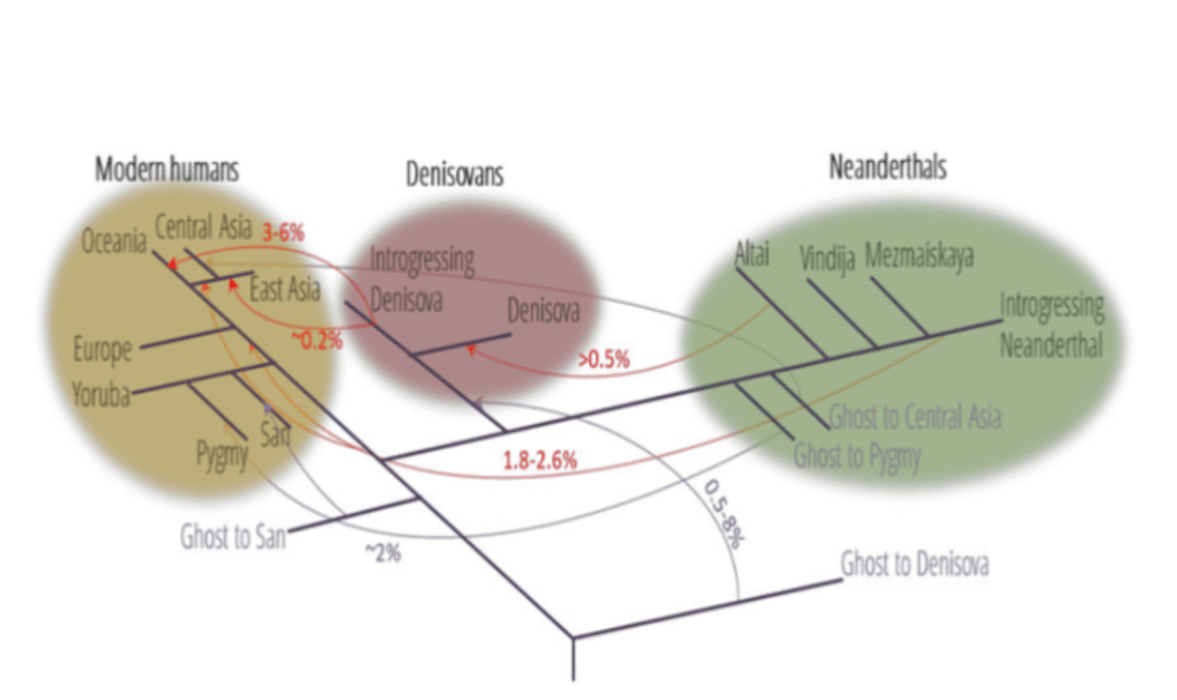News Excerpt:
A detailed analysis of 2,500 mammalian bones from the Baishiya Karst Cave on the Tibetan Plateau has provided fresh insights into the Denisovans' subsistence practices.

About Denisovan:
- The Denisovans are an extinct species or subspecies of archaic humans in the genus Homo.
- They are a sister group to the Neanderthals and share a common ancestor with modern humans.
- Denisovans, who coexisted with modern humans and Neanderthals in Eurasia and were the smallest of the three species, standing 3 to 4 feet tall.
- Modern humans, originating in Africa 300,000 years ago, interbred with Denisovans and Neanderthals after migrating to Asia and Europe around 70,000 years ago.
- They inhabited these caves at an elevation of 3,280 meters above sea level for approximately 100,000 years.

Methodology used:
- A recent study, published in the journal Nature by researchers from Chinese, Danish, and British institutions, has identified a Denisovan rib specimen among the cave findings, dating it to 48,000 to 32,000 years ago.
- This contradicts previous evidence that Denisovans occupied the plateau between 160,000 and 60,000 years ago, indicating their more recent existence.
- The researchers employed Zooarchaeology by Mass Spectrometry (ZooMS) to differentiate between bone collagen of various animals, analyzing protein amino acid structures.
- This advanced technique allowed precise identification of the species the bones belonged to and dated them accurately.
Findings:
- The Baishiya Karst Cave, which previously yielded a Denisovan jawbone, now includes another fossil confirmed as Denisovan.
-
- The discovery enriches the sparse fossil record of this elusive species.
- The study reveals that the Denisovans' diet consisted primarily of mammals.
- Most bones found were from blue sheep (bharal), with others from wild yaks, the extinct woolly rhino, and spotted hyenas.
- Additionally, remains of snow leopards, marmots, golden eagles, and common pheasants were identified.
- Evidence suggests that Denisovans processed these bones, removing meat, extracting bone marrow, and utilizing bones for tools and hides.
Significance of findings:
- Every new Denisovan discovery provides critical clues about their existence and adaptation.
- While Neanderthals, who lived in Europe and Western Asia, are well-studied, Denisovans were only identified in 2010 from fossils found in Siberia's Denisova Cave.
- Since then, Denisovan remains have been found in Laos and the Tibetan cave.
- The recent rib bone discovery came from a different Denisovan individual than the jawbone previously identified.
- The researchers believe that only Denisovans occupied the Baishiya Karst Cave, efficiently utilizing local animal resources.
- The findings suggest a diverse ecosystem with grasslands and small forested areas around the cave, explaining the Denisovans' long-term habitation in the Ganjia Basin.
Conclusion:
The diverse species identified through ZooMS partly answers why the Denisovans chose the Baishiya Karst Cave and how they sustained themselves there for hundreds of thousands of years in the region.


